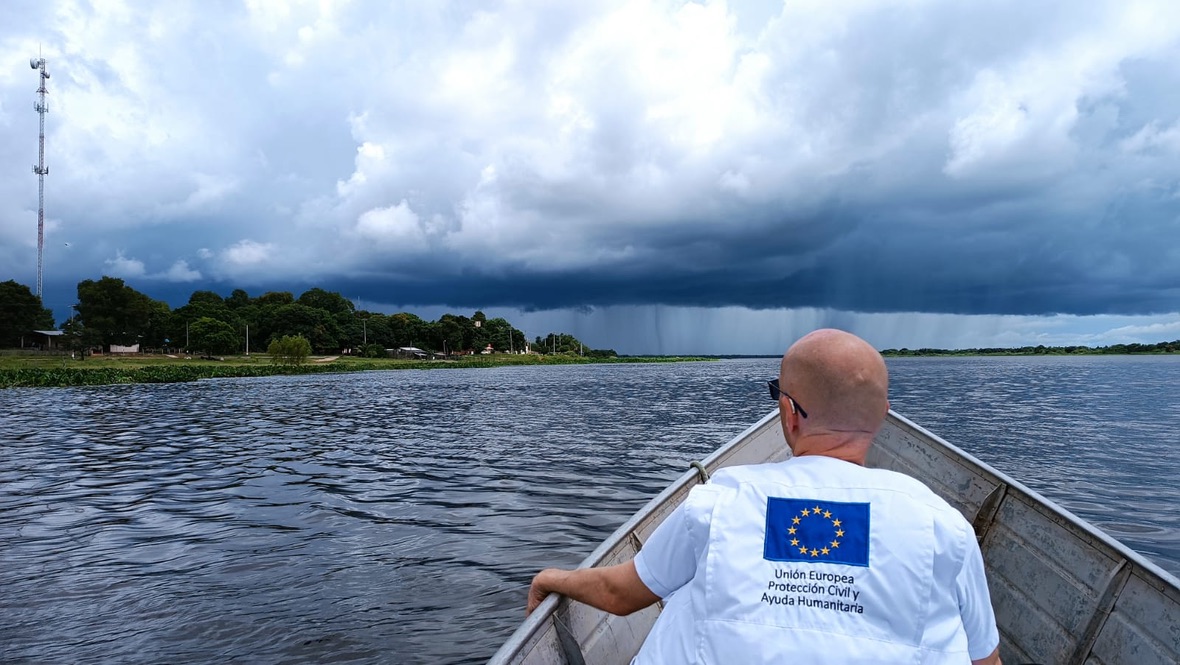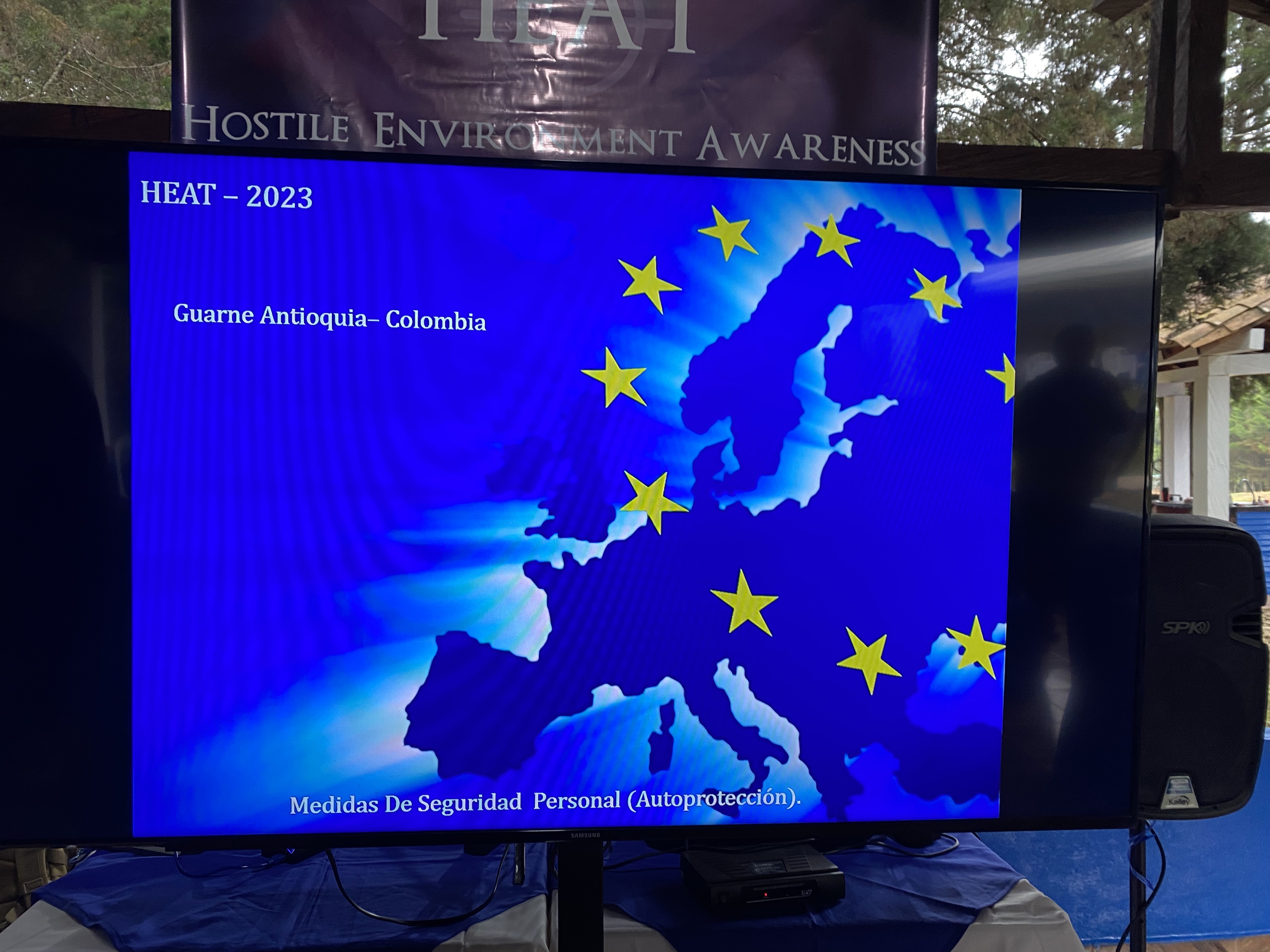An Emergency Deployment for a Flood Crisis in Gran Chaco 🇵🇾🇧🇷

Porto Casado, Paraguay, March 2023
At the end of February and beginning of March 2023, I traveled to Asuncion, Paraguay, in response to the severe floods that affected both Paraguay and Brazil. The floods caused widespread devastation, displacing thousands of people and triggering a massive humanitarian crisis. My mission was to visit the hardest-hit areas, support local responders, and help manage the humanitarian efforts on the ground.
The 2023 Floods in Paraguay and Brazil
The 2023 floods were catastrophic, caused by heavy rainfall and rising waters in the Paraguay River and other waterways. The floods affected entire regions in both Paraguay and Brazil, forcing communities to evacuate and leaving many without access to essential services. Areas along the riverbanks were particularly vulnerable, with homes, farms, and infrastructure submerged.
In Paraguay, the floodwaters overwhelmed the Paraguay River, causing displacement in towns like Villa Hayes, Concepcion, and Puerto Casado. The flooding also reached Brazil, where Porto Murtinho faced similar devastation, underscoring the cross-border nature of the disaster. Humanitarian organisations worked tirelessly to provide food, shelter, and medical care to those in need, while local authorities focused on evacuating communities and coordinating relief efforts.
Areas Affected by the Floods – My Mission on the Ground
During my time in Paraguay, I visited several towns and villages heavily impacted by the floods:
• Villa Hayes: A town near Asuncion that saw widespread damage as floodwaters inundated homes and businesses. I visited shelters and saw the incredible work being done by local responders.
• Concepcion: A city to the north, where the floods created a serious crisis, displacing families and cutting off access to critical supplies. We worked closely with local officials to coordinate aid and relief efforts.
• Puerto Valle-Mi, San Lazaro, Puerto Casado: These smaller towns in northern Paraguay were hit hard by the floods. In these regions, relief teams worked to distribute essential items and provide medical care to those affected.
• Porto Murtinho (Brazil): We traveled by boat across the Paraguay River to visit the Brazilian side, where communities also faced widespread damage from the rising waters.
• Puerto Carmelo Peralta: A town on the border of Paraguay and Brazil, it was another area where we focused on delivering aid and ensuring people received emergency support.
Santa Rosa del Aguaray – The Mormon Community
On our way back to Asuncion, we passed through the town of Santa Rosa del Aguaray, and I was fascinated to learn about the Mormon community that resides in the region. This town, along with other parts of Paraguay, is home to a significant number of Mormon settlers. The Church of Jesus Christ of Latter-Day Saints (LDS) began its missionary work in Paraguay in the 1950s, and over the decades, the Mormon population in the country has grown, with many establishing communities in rural areas.
In Santa Rosa del Aguaray, the Mormon community has built schools, agricultural cooperatives, and churches, making significant contributions to the local economy and society. Their strong work ethic, emphasis on family values, and commitment to self-reliance have earned them respect within the broader Paraguayan society. The community in Santa Rosa del Aguaray has been actively involved in local development projects and humanitarian work, and it was inspiring to learn about their impact on the region.
Returning to Panama City
After a tiring mission and days spent working alongside local responders and humanitarian organisations, I returned to Panama City. The 2023 floods in Paraguay and Brazil left a deep impression on me, and I am grateful for the opportunity to contribute to the relief efforts. The resilience and spirit of the people I met in Paraguay were truly inspiring, and the support from organisations and local communities demonstrated the power of collaboration in times of crisis.
Click here to access the album.
HEAT Training 🇨🇴

Guarne, Colombia, February 2023
At the end of February and beginning of March 2023, I spent a week in the outskirts of Medellín, in Guarne and El Socorro, participating in HEAT (Hostile Environment Awareness Training). This training was both challenging and invaluable, offering me important tools and strategies for working safely in high-risk areas.
What is HEAT Training and Why is it Important?
HEAT training is a specialized course designed for humanitarian workers, NGO staff, aid workers, and anyone who might be working in high-risk environments such as conflict zones or areas affected by natural disasters, political instability, or extreme health risks. It covers a variety of crucial topics to ensure that individuals are well-prepared to face potential dangers and remain safe during their missions.
Key components of HEAT training include:
• Personal security: Learning how to identify and assess risks, avoid dangerous situations, and protect yourself and your team.
• Situational awareness: Understanding the environment and recognising potential threats, such as local conflicts or civil unrest, that could affect safety.
• First aid: Practical training on how to respond to medical emergencies in environments where professional medical assistance may not be readily available. This includes everything from handling wounds and fractures to managing more severe medical crises like heart attacks or allergic reactions.
• Stress management: Techniques for dealing with the mental and emotional challenges that come with working in stressful, unpredictable, and sometimes traumatic environments. This can include managing exposure to violence or life-threatening situations.
• Survival techniques: Training in how to survive in dangerous or unfamiliar terrain, including how to handle emergencies when the normal infrastructure isn’t available.
The importance of this training cannot be overstated. Humanitarian workers often find themselves in challenging and volatile environments where safety is a constant concern. This training helps reduce risks and equips workers with the skills and confidence they need to navigate difficult situations safely and effectively. It also emphasizes self-care and looking after one’s mental health, which is just as crucial as physical safety in these environments.
Exploring Medellín – A City with a Rich History
Despite the intensity of the training, I managed to take some free time to explore Medellín, and I was absolutely blown away by the city. Medellín, once known for its troubled past, is now a thriving metropolis, full of energy, innovation, and cultural vibrancy. The transformation the city has undergone in recent decades is nothing short of remarkable.
• I visited several parts of the city, including the Comuna 13, which has been revitalized through urban art and community engagement. It’s inspiring to see how far Medellín has come in terms of overcoming its challenges and creating a positive and inclusive future.
• I was also impressed by the city’s public transportation system, especially the Metrocable, which offers panoramic views of the city as it glides over the mountains surrounding Medellín.
Connecting with EU Colleagues
Another highlight of the trip was the opportunity to meet many EU colleagues, who normally work around various EU delegations in Latin America. It was great to spend time with such a diverse group of professionals, sharing experiences and learning from each other. We had the chance to relax together after the training and enjoy some local cuisine and hospitality.
A Memorable Week in Medellín
Overall, my time in Medellín was an enriching and rewarding experience. The HEAT training provided valuable skills and knowledge, while the opportunity to explore the city and connect with colleagues made the trip even more special. I left Medellín feeling inspired by both the personal growth from the training and the amazing energy of the city.
Click here to access the album.
